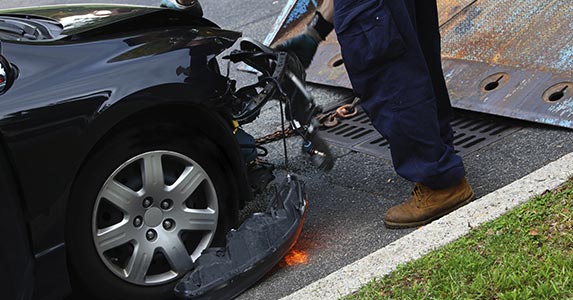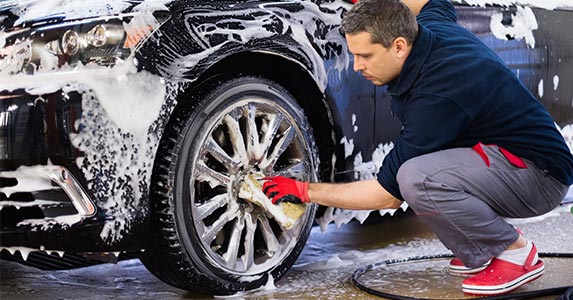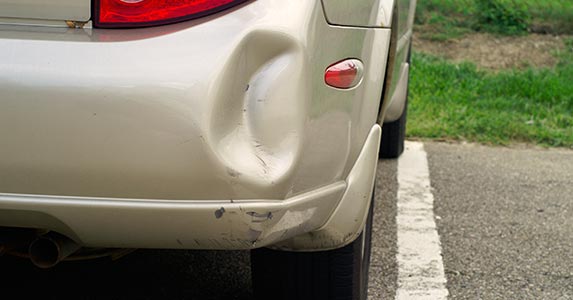But many drivers make the mistake of not reading the fine print before signing a contract, says Philip Reed, senior consumer advice editor at Edmunds.com.
"People make a lot of mistakes when setting up their car leases and it can cost them a lot of money," he says. Here are five common car-leasing mistakes that consumers should avoid.

Pressmaster/Shutterstock.com
That money is generally used to pay a portion of the car lease in advance. "But prepaying is a problem if the car is wrecked or stolen in the first few months," says Reed.
If that were to happen, the insurance company would reimburse the leasing company for the value of the car, but the money the customer paid upfront would likely not be refunded, he says. As a result, the consumer wouldn’t have a car, after having paid a lot of money upfront.
Reed suggests that consumers not pay more than about $2,000 in advance. "In many cases, it makes sense to put nothing down," he says.
If you pay less in advance, your monthly payment would be higher. But you could take the "prepayment" cash and put it in an interest-bearing account instead.
You could use that money to help make the monthly lease payments, says Reed. And if something happens to the vehicle before the end of the term, at least the leasing company wouldn’t have a big chunk of your money.
FREE TOOL: Use Bankrate's calculator to figure out whether buying or leasing a car is cheaper for you.

CHRISsadowski/E+/GettyImages
If a leased car is stolen or totaled and the car insurance company makes a payment for the value of the car, that sum may not cover the consumer's total obligation under the terms of the lease, he says.
The driver would likely have to pay the balance out of pocket unless he has gap insurance. In that case, the policy would cover the difference, he says.
At the beginning of any car lease, consumers should ask if the contract includes this specialty gap insurance coverage, says Jacobson. If it doesn't, the customer should consider looking for a car with a lease plan that does.
"There is exposure without gap insurance," he says, "so I would not lease a car without it."
FREE CREDIT SCORE: Don't get ambushed by a bad credit score at the dealership. Check your credit score and credit report first at myBankrate for free.

Nejron Photo/Shutterstock.com
It's common for leasing contracts to have a driving maximum of 10,000 miles to 15,000 miles per year, he says. If consumers exceed those limits, they could be charged an additional 10 cents to 30 cents per mile at the end of the lease.
"You could wind up owing a lot of money for miles when it's time to turn in the car," Jacobson says. The driver could owe big bucks on a car he is no longer driving.
RATE SEARCH: Saving for a down payment on a car? Open a savings account today with the best rates.
To avoid this extra fee, consumers should know their driving habits before signing the contract, says Jacobson. If they know they'll probably drive more miles than the agreement allows, they could ask for a higher limit.
Still, there's a drawback: The monthly lease payment would probably go up with a mileage increase, he says.

bgwalker/E+/GettyImages
Generally, if a car has a scratch but the mark is less than the size of a driver's license or business card, many companies will consider it normal use. They probably won't charge a penalty, says Jacobson.
Jacobson says that if there's damage to the car, the customer will have a chance to have it fixed on his own dime before turning it in. Otherwise, the leasing company will assess a value to the damage.
In terms of "normal wear," the definition can vary, and drivers shouldn't assume that their own lease servicers will be lenient. "Some will nitpick the car to pieces," says Jacobson. "Before getting the vehicle, consumers should ask what the lease-end-condition guidelines are."
Barbara Terry, an automobile columnist and author of the book "How Athletes Roll," says if the car is significantly damaged, drivers can expect a bill for repairs at "full market price."

antoniodiaz/Shutterstock.com
Reed recommends that consumers not lease cars for longer than the warranty period, which averages three years, or 36,000 miles. "That's a turning point in the car's life, when it goes out of the bumper-to-bumper warranty," says Reed.
"If you keep the car longer, you'd have to consider getting an extended warranty at an additional cost, plus you may need to pay for new tires and brakes -- all for a car that you don't own," he says.
If a consumer plans to be in the same car for a long time, it's probably better to buy it, says Terry.
"If the driver owns the car, he'd have to pay for the car and pay for maintenance, but then he could continue to drive it for several years without having to worry about a required monthly lease payment," she says.
RATE SEARCH: Comparing car loans? Check interest rates now at Bankrate.
Source: bankrate.com
